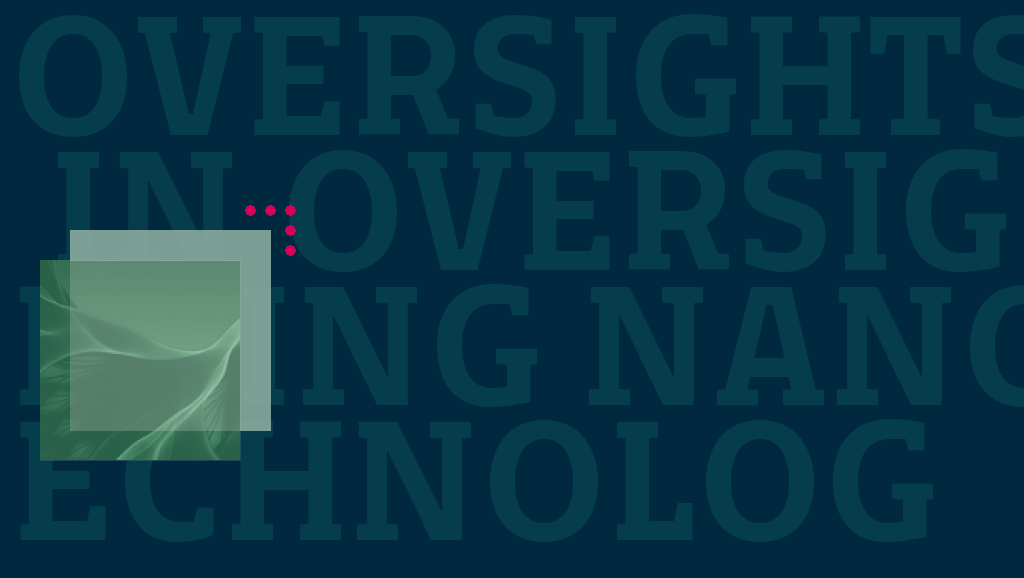In this article I would like to follow up on my series of postings on nanotechnology by taking a look at the recent report entitled Oversight of Next Generation Nanotechnology written by J Clarence Davies and published by The Woodrow Wilson International Centre for Scholars as part of their project on emerging nanotechnologies.
The author of this report, J Clarence Davies is one of the foremost authorities on environmental research and policy, he served under the first Bush administration and was co-author of the plan that lead to the creation of the US Environmental Protection Agency. In his executive summary he argues that over the last 25 years “the capability of the federal agencies responsible for environmental health and safety has steadily eroded” and that “the agencies cannot now perform their basic functions” and are “completely unable to cope with the new challenges they face in the 21st century”. An interesting premise!
He states that the paper will describe some of the challenges faced and offer some suggestions that could revitalize the health and safety agencies, and in fact proposes a new federal department of environmental and consumer protection.
The paper opens by describing the current oversight approach to nanotechnology in the US as inadequate, and as science advances the problems increase and the system becomes ever more so. He argues that for the good of society and also to enable the growth of nanotechnology a new system must be put into place.
The paper goes on to describe present nanotechnology applications and various future possibilities, including a four stage development process that I have previously described in a previous posting.
Current research includes injecting gold coated nano particles into subjects suffering from cancer that can then be heated using radio waves in order to kill cancerous cells and yet avoid damaging healthy cells. The US army are working on a new nanotechnology battle suit for soldiers, and major computer companies are exploring the possibility of using nanotechnology to improve current flow in microchips. Other research is studying applications in battery, renewable energy and glue production.
The section entitled Characteristics of nanotechnology (p 17) makes for interesting reading as it broaches some interesting technical and ethical problems. How can the public be involved in decision-making when the level of expertise required to meaningfully participate in any debate is so high? How can any governing body be expected to understand the problems addressed by a small number of highly specialized scientists? How can risk be assessed and managed in such a field? Should nanotechnology be used in food production and if so should it be labeled as such? Could self assembly and self replication lead to Bladerunner or 2001 type scenarios with humans losing control over machine reproduction?
In the second section of the report entitled Existing Oversight and Next Generation Nanotechnology the author analyzes the current oversight situation both in the US and in Europe arguing that the situation is not as grave in Europe due to the fact that the regulating body (REACH) is a much newer and broader organization, and although still failing in effective regulation this is mainly down to problems of definition and categorization of what actually need to be regulated, and in some measure down to the lack of an all encompassing comprehensive and coordinated oversight system.
The third section of the report entitled The Future of Oversight is a description of what a more adequate overview system might look like. From the standpoint that the current system is inadequate for the enormity of the task ahead the author advocates the complete scrapping of the current system and the creation of a more integrated system and proposes the new federal department of environmental and consumer protection sited above, for whom problems do not have narrow definitions but are seen as intertwined with all the other results of the process.
The proposal is that it is products that should be regulated and not their components. Arguing that if certain types of nanotubes for example are found to be damaging to health they could be combined with other products, modified or used in a way that negates this potential threat, a form of evaluation that is not possible if the nanotubes themselves are regulated. The author proposes that at each manufacturing level the producer must publish a report on the possible risks involved in their product. Failure to do this must carry heavy sanctions, but the result would be a type of family tree for the finished product, containing the geniality of all its components, the burden of proof always being held by the manufacturer.
Regarding technology the report proposes three important factors that are currently overlooked. Assessment of the technology’s impacts, especially unintended impacts; ways for the public to understand the technology’s impacts and register its views; and ways for the government to translate the public’s views into actions. The report goes on to discuss the practicalities of the proposal outlined above, paying attention to the problems of foreseeing potential problems, risk assessment, monitoring, enforcement, public involvement and government intervention and the resulting stifling of innovation.
The report concludes with a line that seems to me to hit the nail squarely on the head. “The paper is an exercise in both technology forecasting and policy envisioning. If the forecasts are even roughly accurate, then thinking about new policies is urgently needed”.
















